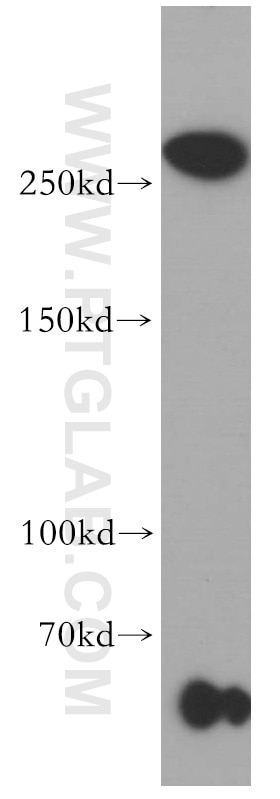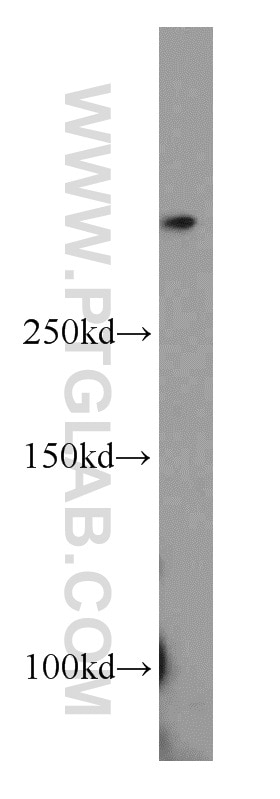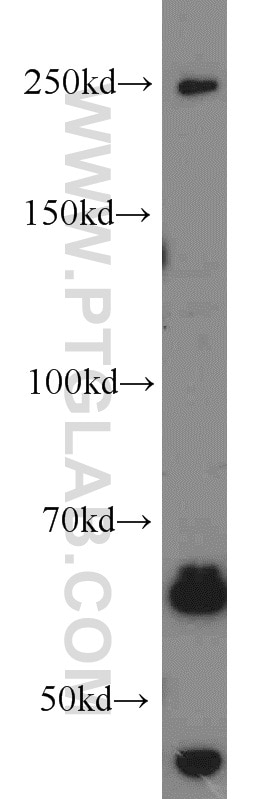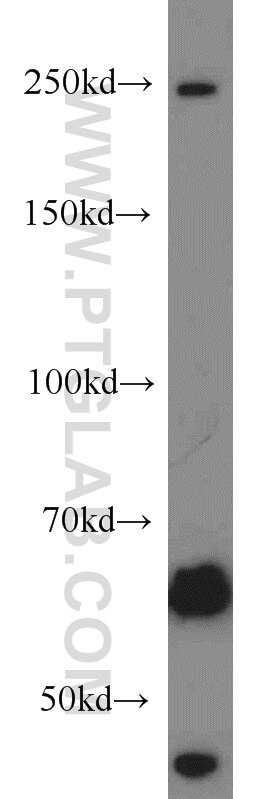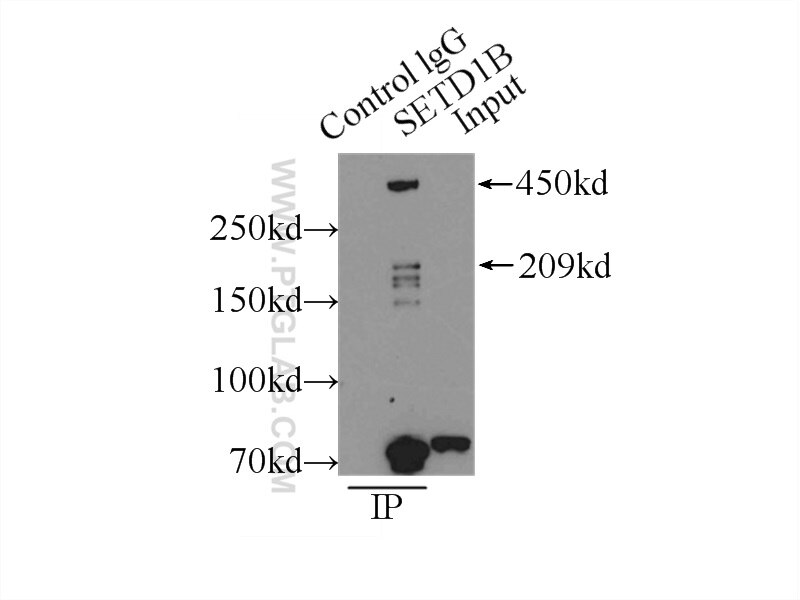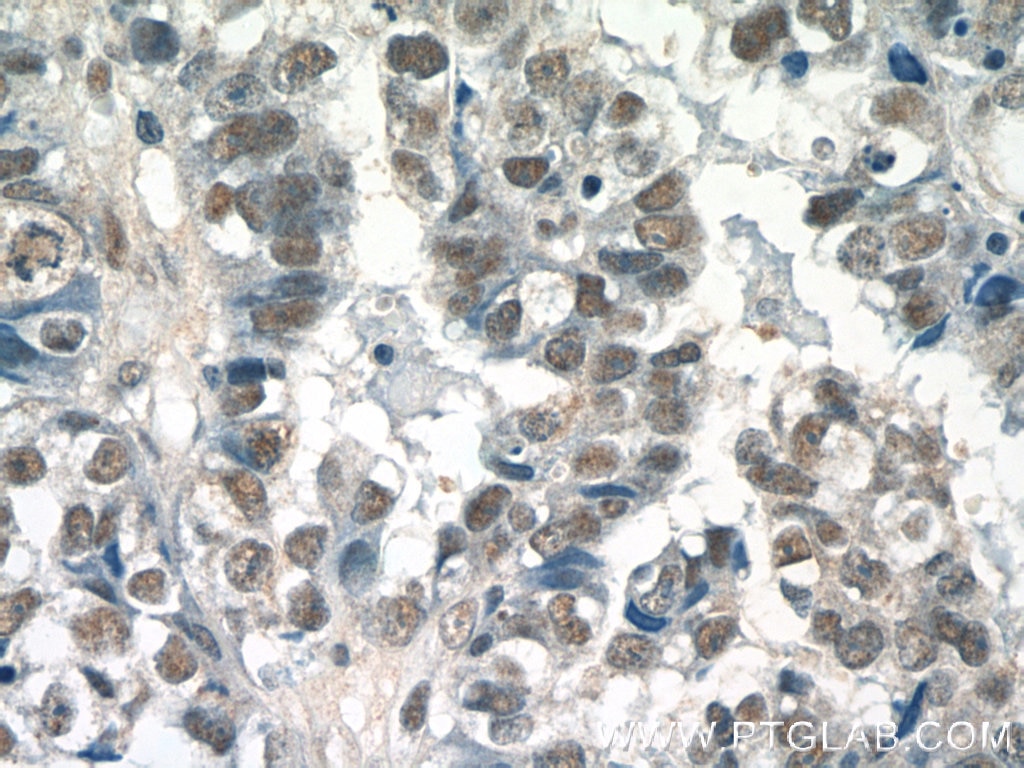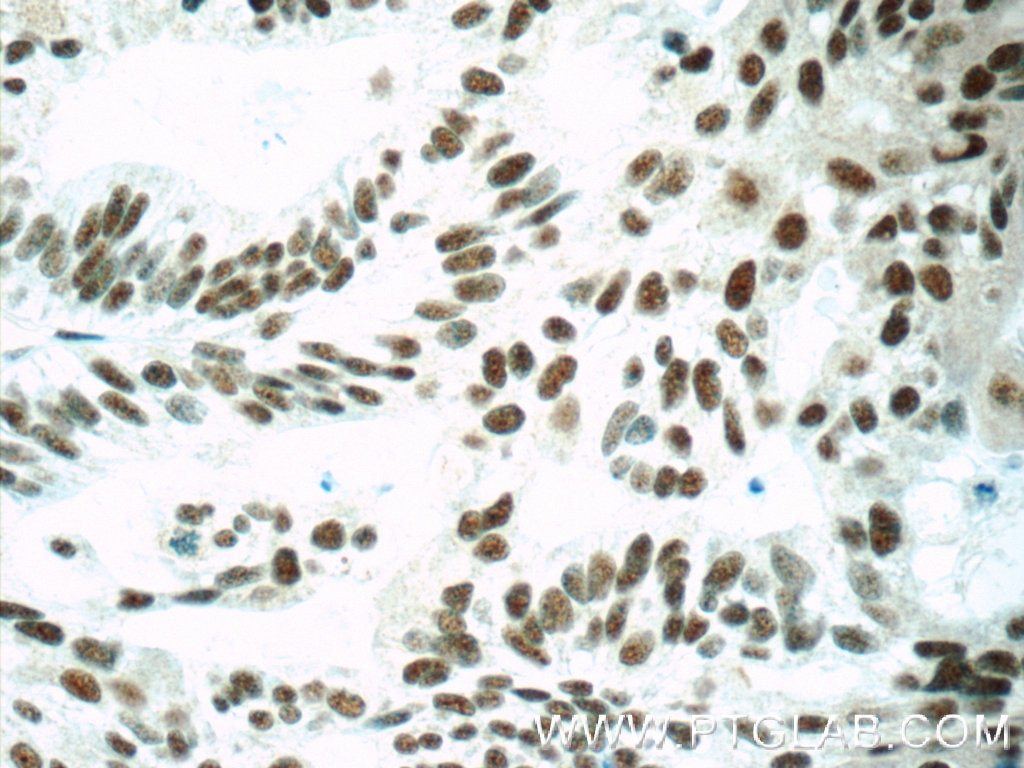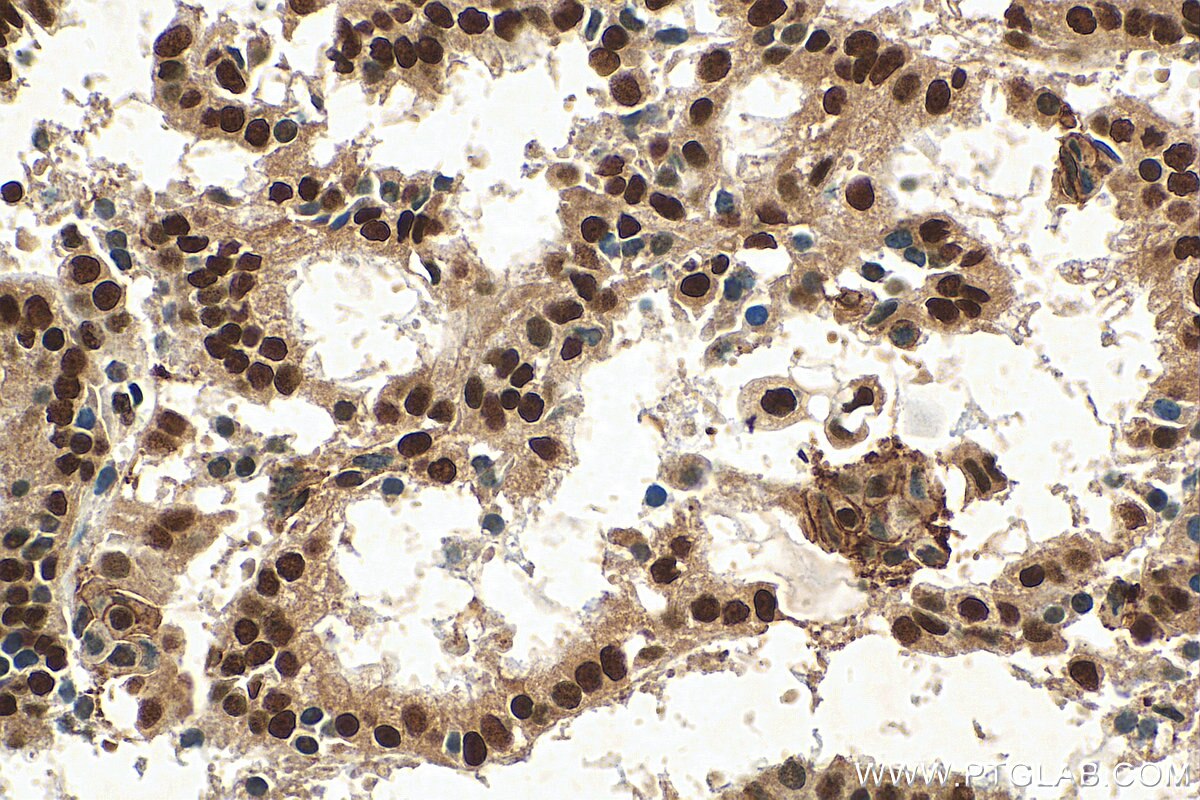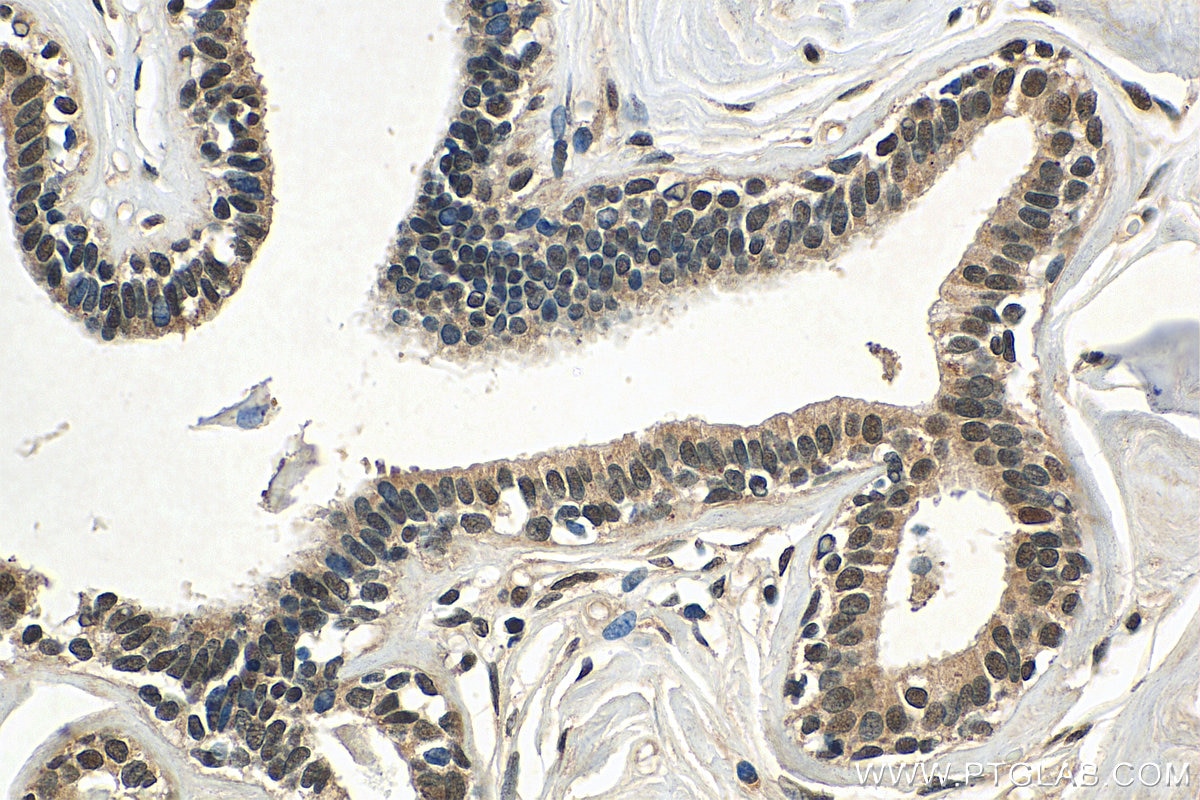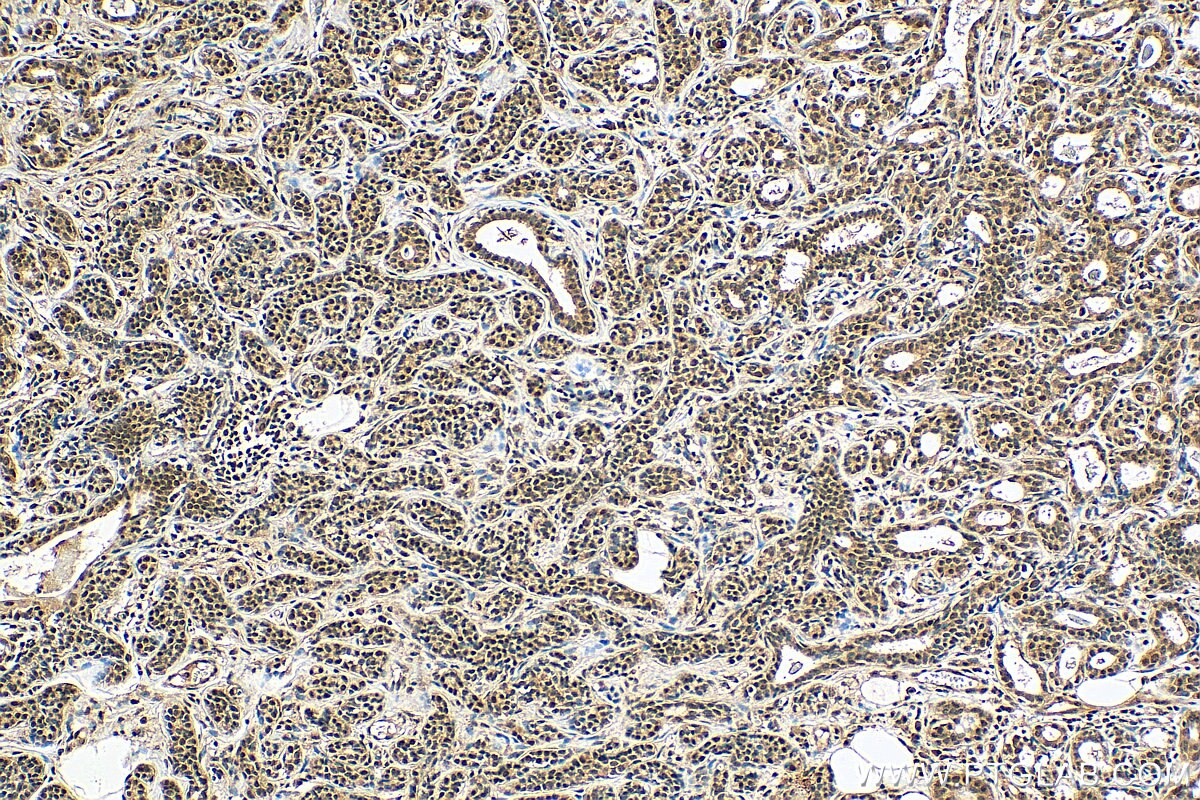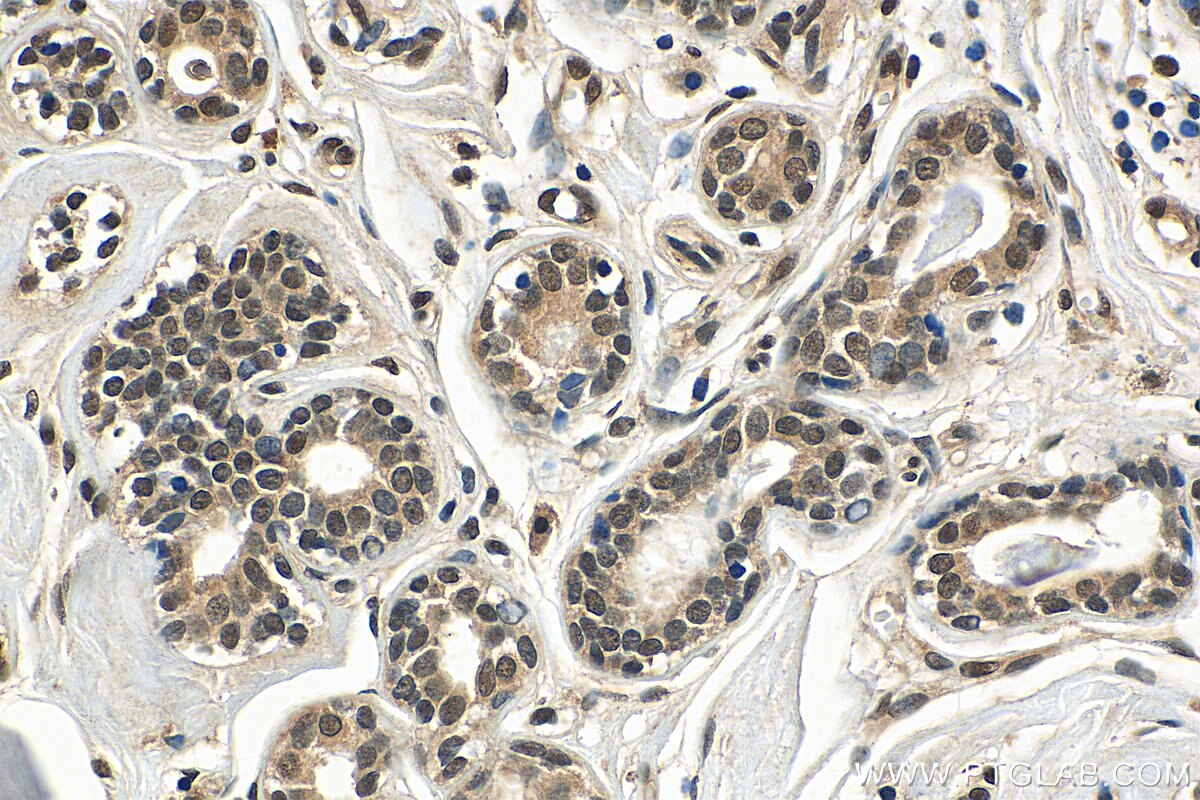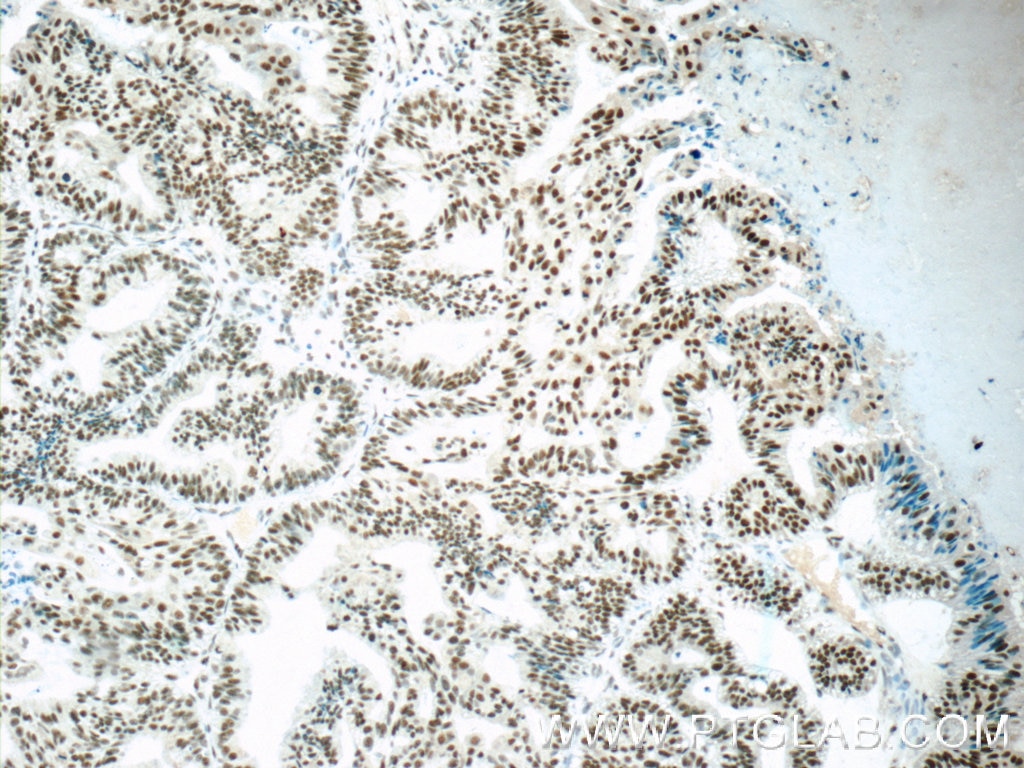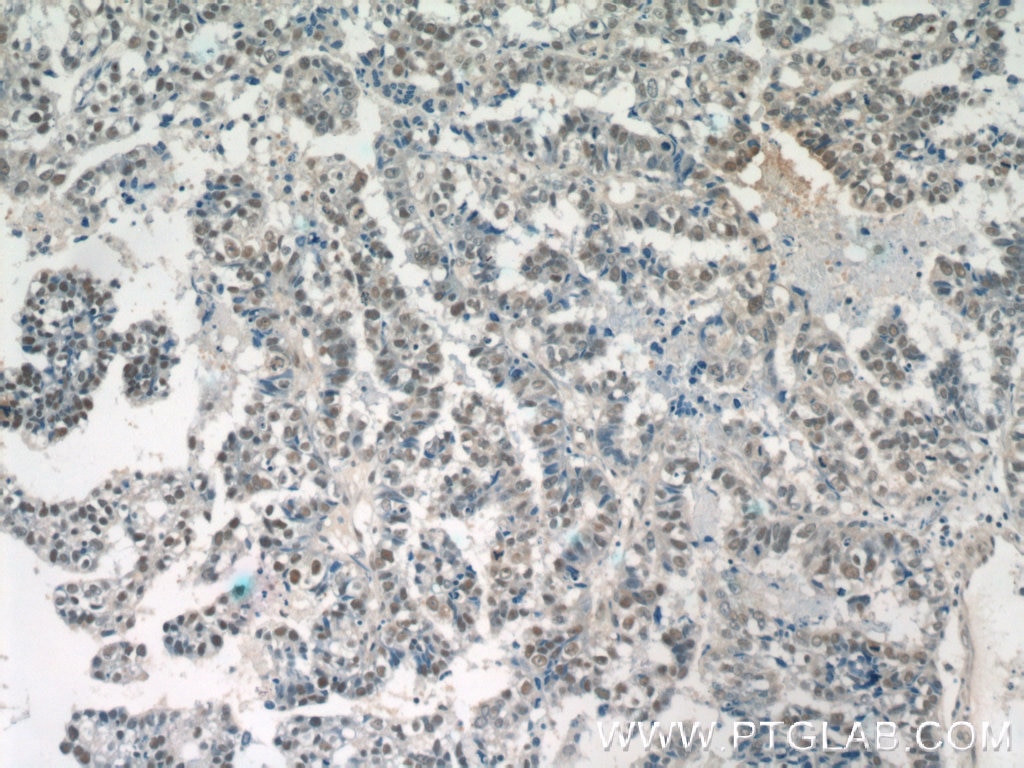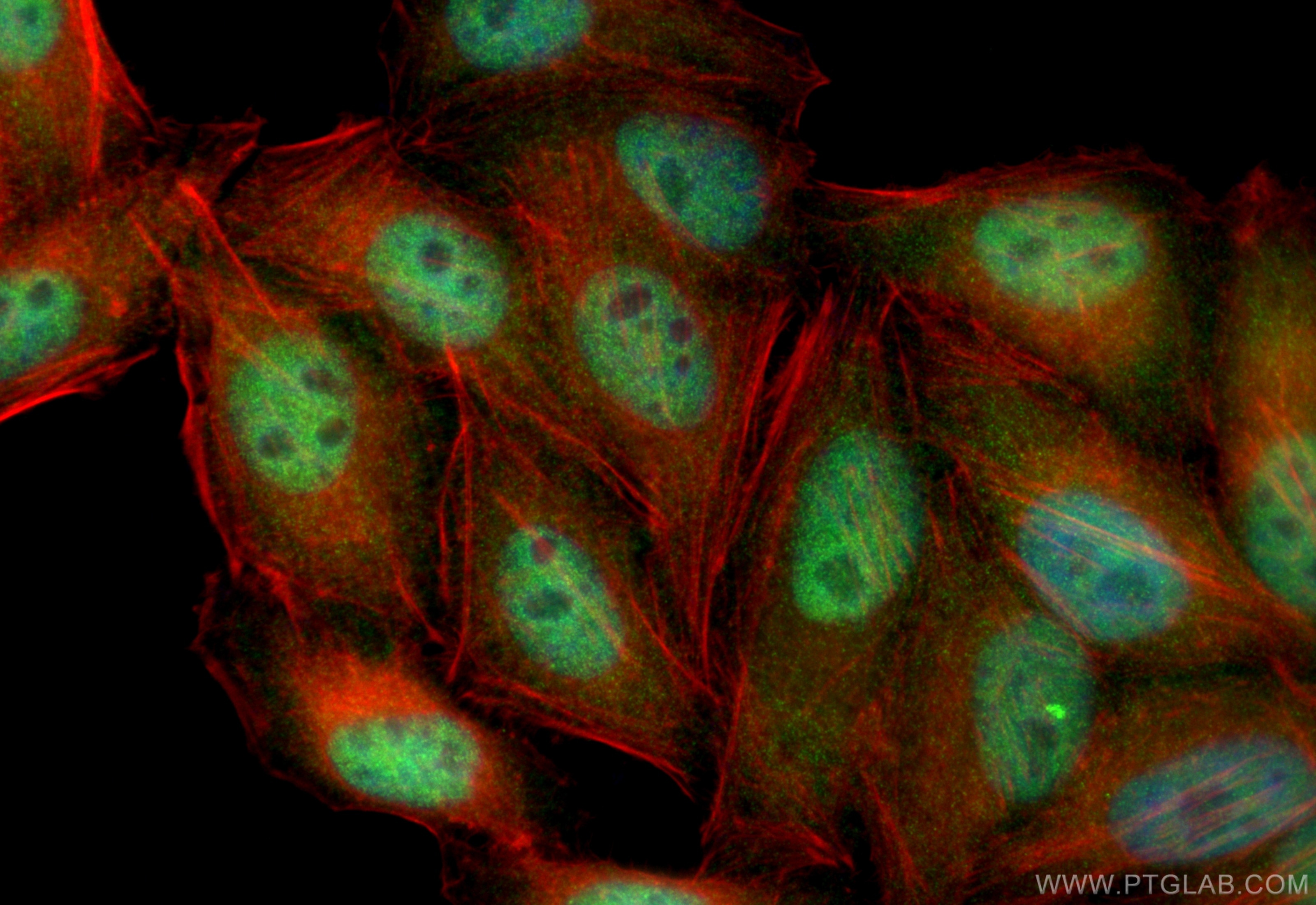Tested Applications
| Positive WB detected in | human brain tissue, MCF-7 cells, mouse liver tissue |
| Positive IP detected in | MCF-7 cells |
| Positive IHC detected in | human breast cancer tissue, human ovary tumor tissue Note: suggested antigen retrieval with TE buffer pH 9.0; (*) Alternatively, antigen retrieval may be performed with citrate buffer pH 6.0 |
| Positive IF/ICC detected in | HepG2 cells |
Recommended dilution
| Application | Dilution |
|---|---|
| Western Blot (WB) | WB : 1:500-1:1000 |
| Immunoprecipitation (IP) | IP : 0.5-4.0 ug for 1.0-3.0 mg of total protein lysate |
| Immunohistochemistry (IHC) | IHC : 1:20-1:200 |
| Immunofluorescence (IF)/ICC | IF/ICC : 1:50-1:500 |
| It is recommended that this reagent should be titrated in each testing system to obtain optimal results. | |
| Sample-dependent, Check data in validation data gallery. | |
Published Applications
| KD/KO | See 1 publications below |
| WB | See 6 publications below |
| IHC | See 4 publications below |
| IF | See 1 publications below |
| ChIP | See 3 publications below |
Product Information
55005-1-AP targets SETD1B in WB, IHC, IF/ICC, IP, ChIP, ELISA applications and shows reactivity with human, mouse samples.
| Tested Reactivity | human, mouse |
| Cited Reactivity | human, mouse |
| Host / Isotype | Rabbit / IgG |
| Class | Polyclonal |
| Type | Antibody |
| Immunogen |
Peptide Predict reactive species |
| Full Name | SET domain containing 1B |
| Calculated Molecular Weight | 209 kDa |
| Observed Molecular Weight | 250-260 kDa, 450 kDa |
| GenBank Accession Number | NM_015048 |
| Gene Symbol | SETD1B |
| Gene ID (NCBI) | 23067 |
| RRID | AB_10858389 |
| Conjugate | Unconjugated |
| Form | Liquid |
| Purification Method | Antigen affinity purification |
| UNIPROT ID | Q9UPS6 |
| Storage Buffer | PBS with 0.02% sodium azide and 50% glycerol, pH 7.3. |
| Storage Conditions | Store at -20°C. Stable for one year after shipment. Aliquoting is unnecessary for -20oC storage. 20ul sizes contain 0.1% BSA. |
Background Information
SETD1B, also named as KMT2G. Set1B associates with a about 450 kDa complex that contains all five non-catalytic components of the Set1A complex, including CFP1, Rbbp5, Ash2, Wdr5, and Wdr82. The complex is a histone methyltransferase that produces trimethylated histone H3 at Lys4. Set1B is widely expressed, and localize to a largely non-overlapping set of euchromatic nuclear speckles, suggesting that Set1B bind to a unique set of target genes and thus make non-redundant contributions to the epigenetic control of chromatin structure and gene expression( PMID: 17355966). The antibody is specific to SETD1B and, in westernbloting experiments, two specific bands can be detected, about 250 kDa, 450 kDa respectively, in addition, a unknown band around 70 kDa. This antibody is a rabbit polyclonal antibody raised against a region of human SETD1B.
Protocols
| Product Specific Protocols | |
|---|---|
| IF protocol for SETD1B antibody 55005-1-AP | Download protocol |
| IHC protocol for SETD1B antibody 55005-1-AP | Download protocol |
| IP protocol for SETD1B antibody 55005-1-AP | Download protocol |
| WB protocol for SETD1B antibody 55005-1-AP | Download protocol |
| Standard Protocols | |
|---|---|
| Click here to view our Standard Protocols |
Publications
| Species | Application | Title |
|---|---|---|
EMBO J Histone methyltransferases MLL2 and SETD1A/B play distinct roles in H3K4me3 deposition during the transition from totipotency to pluripotency
| ||
Int J Mol Sci (20S) Ginsenoside Rh2 Exerts Its Anti-Tumor Effect by Disrupting the HSP90A-Cdc37 System in Human Liver Cancer Cells. | ||
Am J Cancer Res Risk model-guided identification of MTDH expression as a marker for ferroptosis induction therapy in head and neck squamous cell carcinoma | ||
Biogerontology Histone lysine methyltransferases and their specific methylation marks show significant changes in mouse testes from young to older ages | ||
Histochem Cell Biol Expression of the histone lysine methyltransferases SETD1B, SETDB1, SETD2, and CFP1 exhibits significant changes in the oocytes and granulosa cells of aged mouse ovaries. | ||
Int Immunopharmacol NF-κB p65 and SETDB1 expedite lipopolysaccharide-induced intestinal inflammation in mice by inducing IRF7/NLR-dependent macrophage M1 polarization |

